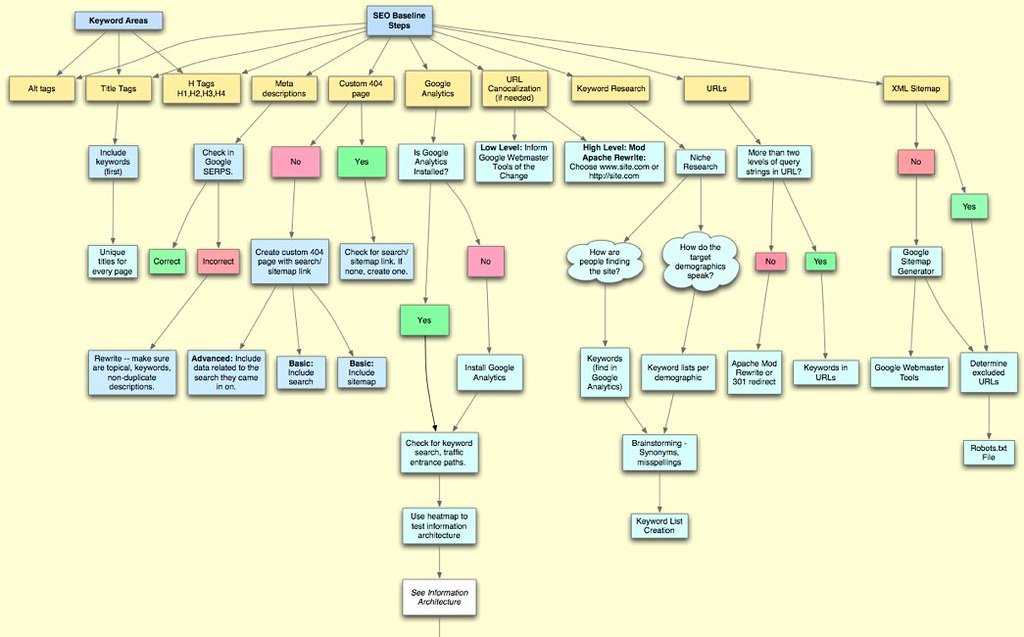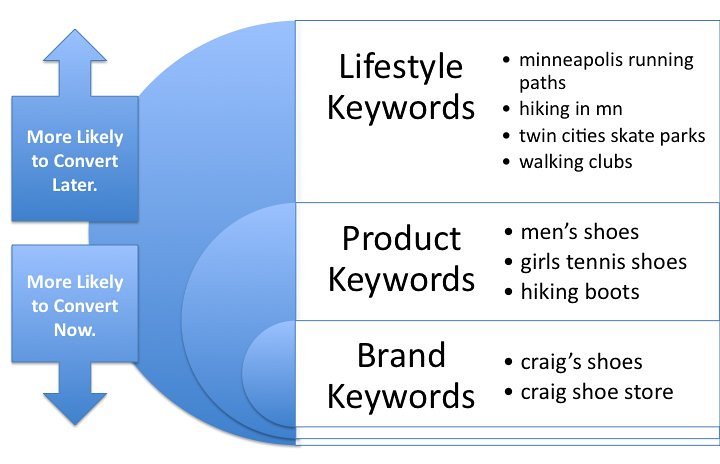Welcome, dear readers, to the thrilling expedition through the enchanting realm of Search Engine Optimization (SEO). As you embark on this adventure, the complexities of the SEO labyrinth may appear daunting at first glance, but fear not! We are here to light up your path, unwrapping the hidden gem of site maps that unlocks the true power of your website. Brace yourselves for a journey that will not only demystify the enigma of SEO, but also equip you with the knowledge to conquer the digital landscape. So, without further ado, let us embark on this quest, guiding you through the twists and turns of the SEO labyrinth to discover the boundless potential of site maps.
Table of Contents
- Heading 1: Demystifying the SEO Labyrinth: How Site Maps Boost Website Visibility and Performance
- Heading 2: The Key Components of an Effective Site Map: Unveiling the Secrets to Successful SEO Optimization
- Heading 3: Mastering Site Map Implementation: Expert Recommendations for Navigating Your Way to Improved Search Rankings
- Heading 4: Unlocking the Hidden Potential: Leveraging Site Maps to Enhance User Experience and Website Accessibility
- Q&A
- Wrapping Up

Heading 1: Demystifying the SEO Labyrinth: How Site Maps Boost Website Visibility and Performance
Why Site Maps are Essential for Enhancing Your Website’s Visibility and Performance
When it comes to optimizing your website for search engines, one crucial tool that often gets overlooked is the site map. A site map, as the name suggests, acts as a roadmap for search engine crawlers, guiding them through the complex maze of your website’s pages. By providing a clear and organized structure, site maps ensure that search engines can easily discover and index your content, ultimately boosting your website’s visibility and performance in the vast online landscape.
So, what makes site maps so powerful? Let’s take a closer look:
- Improved crawlability: Just like a well-constructed road network, a site map helps search engines navigate and explore your website more efficiently. It provides a logical hierarchy of your pages, ensuring that no valuable content gets missed.
- Enhanced indexation: With a site map in place, search engines can quickly identify and index all your web pages. This means that even the deepest corners of your site won’t go unnoticed, increasing the likelihood of your content being found by users.
- Faster updates: Whenever you make changes or add new pages to your site, it can take some time for search engines to discover them. By including these updates in your site map, you can expedite the process and ensure that your freshest content gets indexed promptly.
- Better user experience: A well-structured site map doesn’t just benefit search engines; it also improves the overall user experience. With a clear navigation path, visitors can easily find the information they’re looking for, enhancing their satisfaction and encouraging them to explore more of your website.
By now, you might be wondering how to create a site map for your own website. Don’t worry, it’s not as complicated as it may seem. There are numerous tools and plugins available that can generate XML site maps for you, ensuring that search engines can seamlessly crawl and index your website’s content. So, if you’re ready to unlock the full potential of your website’s visibility and performance, dive into the fascinating world of site maps and watch your online presence flourish!

Heading 2: The Key Components of an Effective Site Map: Unveiling the Secrets to Successful SEO Optimization
The Key Components of an Effective Site Map: Unveiling the Secrets to Successful SEO Optimization
When it comes to SEO, every step matters, and one crucial element often overlooked is the site map. Think of it as the compass that guides search engines through the intricate labyrinth of your website, ensuring that your content is discovered and indexed effectively. So, what are the key components that make up an effective site map? Let’s unravel the secrets and unlock the power of site maps for successful SEO optimization.
1. Clarity and Organization: A well-structured site map acts as a roadmap for both search engine crawlers and your visitors. It should be organized in a logical flow, allowing users to navigate through your website effortlessly and search engines to crawl and understand the hierarchy of your pages. Keep it simple, concise, and user-friendly to enhance the overall user experience.
2. Regular Updates and Freshness: Like a living document, your site map should evolve as your website grows and changes. Regularly update it to reflect any additions, removals, or modifications to your content. This ensures that search engines are aware of all the latest pages on your site, allowing them to be indexed promptly. Freshness is key to maintaining a healthy and dynamic online presence.

Heading 3: Mastering Site Map Implementation: Expert Recommendations for Navigating Your Way to Improved Search Rankings
When it comes to improving your website’s search rankings, mastering site map implementation is an essential skill. Site maps act like a GPS, guiding search engines and users through the labyrinth of your website’s pages and content. They provide a clear and structured roadmap, making it easier for both humans and web crawlers to navigate your site.
So, how do you harness the power of site maps? Here are some expert recommendations to get you started:
- Organize your content: Just like a well-organized book, your website should have a logical structure. By categorizing your content and arranging it hierarchically in your site map, you create a user-friendly experience that helps visitors find what they’re looking for more easily.
- Include all relevant pages: Every page on your website should be included in your site map. This ensures that search engines can discover and index all your valuable content, increasing the visibility of your site in search results.
- Optimize your URLs: Use clear and descriptive URLs that reflect the content of each page. This not only helps search engines understand what your page is about, but it also improves the user experience by providing a readable and meaningful link.
A well-implemented site map is like a compass, pointing search engines in the right direction and guiding them to your most important pages. It helps search crawlers explore and understand your site’s structure, ensuring that all your content gets indexed. By following these expert recommendations, you’ll be well on your way to mastering site map implementation and improving your search rankings!

Heading 4: Unlocking the Hidden Potential: Leveraging Site Maps to Enhance User Experience and Website Accessibility
When it comes to optimizing your website for search engines and improving user experience, exploring the power of site maps is an absolute game-changer. Consider them as your trusty map that guides search engine bots and users throughout your website, uncovering its hidden potential and making it more accessible to all. Site maps are like the secret passageways to unlock the true value of your website, and here’s why:
- Organization at its finest: Site maps offer a structured overview of your website’s content and pages, making it easier for search engine crawlers to navigate and index your site. They serve as a navigation menu and ensure that all your website’s areas are accessible, ensuring that no page goes unnoticed. Just like a well-organized book, site maps make it effortless for both search engines and visitors to find exactly what they’re looking for.
- User experience enhancement: Imagine visiting a new city without a map. It can be overwhelming, right? The same goes for your website visitors. Site maps provide a clear path and lay the groundwork for smooth navigation, helping users discover different sections and quickly find the information they need. By having an intuitive site map, users can easily explore your website’s hidden gems, without getting lost in the labyrinth of pages and content.
Q&A
Q: Are site maps really that important for SEO?
A: Absolutely! Site maps act as a virtual compass for search engines, making it easier for them to navigate and index your website. Think of them as your secret allies in boosting your search rankings!
Q: What exactly is a site map?
A: Picture a treasure map leading search engine spiders through the maze of your website. A site map is a structured list or diagram that outlines all the pages and content on your website, acting as a roadmap for search engine bots.
Q: How can site maps improve my website’s visibility?
A: By providing search engine spiders with a clear pathway to all your webpages, site maps ensure that your website gets indexed more efficiently. This, in turn, increases the chances of your website ranking higher in search engine results pages (SERPs) and attracting more organic traffic.
Q: Do I really need a site map if my website is small?
A: Absolutely! Even for small websites, site maps are essential. They eliminate the risk of any valuable content or pages being overlooked by search engine crawlers. Plus, they simplify the crawling process, optimizing search engine visibility for small websites as well.
Q: Are there different types of site maps?
A: Indeed, there are two main types of site maps: XML site maps and HTML site maps. XML site maps are designed specifically for search engines and help them better understand your website’s structure. On the other hand, HTML site maps are designed for human visitors, providing an easy-to-navigate outline of your website’s pages.
Q: Can site maps help me identify and fix technical issues on my website?
A: Absolutely! Site maps can act as detective tools, revealing any broken links, inaccessible pages, or other technical errors lurking in the depths of your website. By identifying these issues, you can swiftly address them and enhance user experience while also aiding search engines to crawl your site smoothly.
Q: How can I create a site map for my website?
A: There are various tools and plugins available to create site maps effortlessly. You can use website builders, content management systems (CMS), or dedicated site map generator tools. Many of them even offer automated updates, keeping your site map in sync with any changes made to your website.
Q: Is it sufficient to create a site map and leave it be?
A: Not at all! It’s crucial to keep your site map regularly updated to reflect any changes or additions to your website. By regularly refreshing your site map, you ensure search engine crawlers are always up to date with your latest content, giving you a competitive edge in the SEO game.
Q: Can site maps improve the user experience as well?
A: Absolutely! Site maps enhance user experience by providing a clear overview of your website’s structure. Visitors can quickly find the information they need and navigate through your pages effortlessly. A well-designed site map helps users find what they’re looking for, resulting in longer page visits and increased user engagement.
Q: How do I submit my site map to search engines?
A: Most search engines have dedicated tools and platforms for site owners to submit their site maps. Google Search Console and Bing Webmaster Tools are commonly used for this purpose. By submitting your site map, you allow search engines to crawl and index your website more effectively, boosting your chances of high visibility.
Remember, site maps are your enchanting guides in the SEO labyrinth, helping search engines discover and understand your website’s hidden gems. Unveil their power, and watch your website flourish in the realm of search engine rankings!
Wrapping Up
As we conclude our journey through the intricate web of SEO strategy, it is time to unveil the underlying power of site maps. We’ve explored the depths of the SEO labyrinth, armed with determination and an insatiable curiosity to decode its secrets. On this quest, we’ve discovered that site maps truly hold the key to unlocking the full potential of our websites.
Just like an ancient map leading explorers through uncharted territories, a well-structured site map guides search engine crawlers with ease. It is a blueprint for success, paving the way for enhanced indexing and improved visibility. Gone are the days of leaving your website’s fate to chance – with site maps, you seize control and direct the search engines right to where you want them.
Imagine a labyrinth with countless hidden paths and corners, confusing even the savviest of adventurers. That is akin to a poorly organized website lacking a site map. Search engine spiders would wander aimlessly, unable to comprehend the true value and relevance of your content, while potential visitors grow lost in the maze. But with a comprehensive site map, the path becomes clear, and purpose arises from the chaos.
The power of site maps transcends the virtual realm; it breathes life into your website. Each link, each page, each piece of content finds its rightful place, harmoniously coexisting within a structured network. Your users will appreciate the effortless navigation as they seamlessly navigate your site. Search engines, in turn, will reward your efforts by bestowing higher rankings upon you, drawing in a steady stream of organic traffic.
In this intricate dance of SEO, site maps are the elegant choreographers, orchestrating the flow of information, relevance, and discoverability. They tirelessly ensure that your web pages are spotlighted, allowing them to shine before the discerning eyes of search engine algorithms.
So, fellow SEO adventurers, as we bid farewell and return to our respective screens, remember the power that lies within site maps. Embrace these invaluable tools, infuse your websites with clarity and purpose, and watch as your search engine rankings soar to new heights. Let site maps guide you through the labyrinth, towards a digital landscape filled with success.

